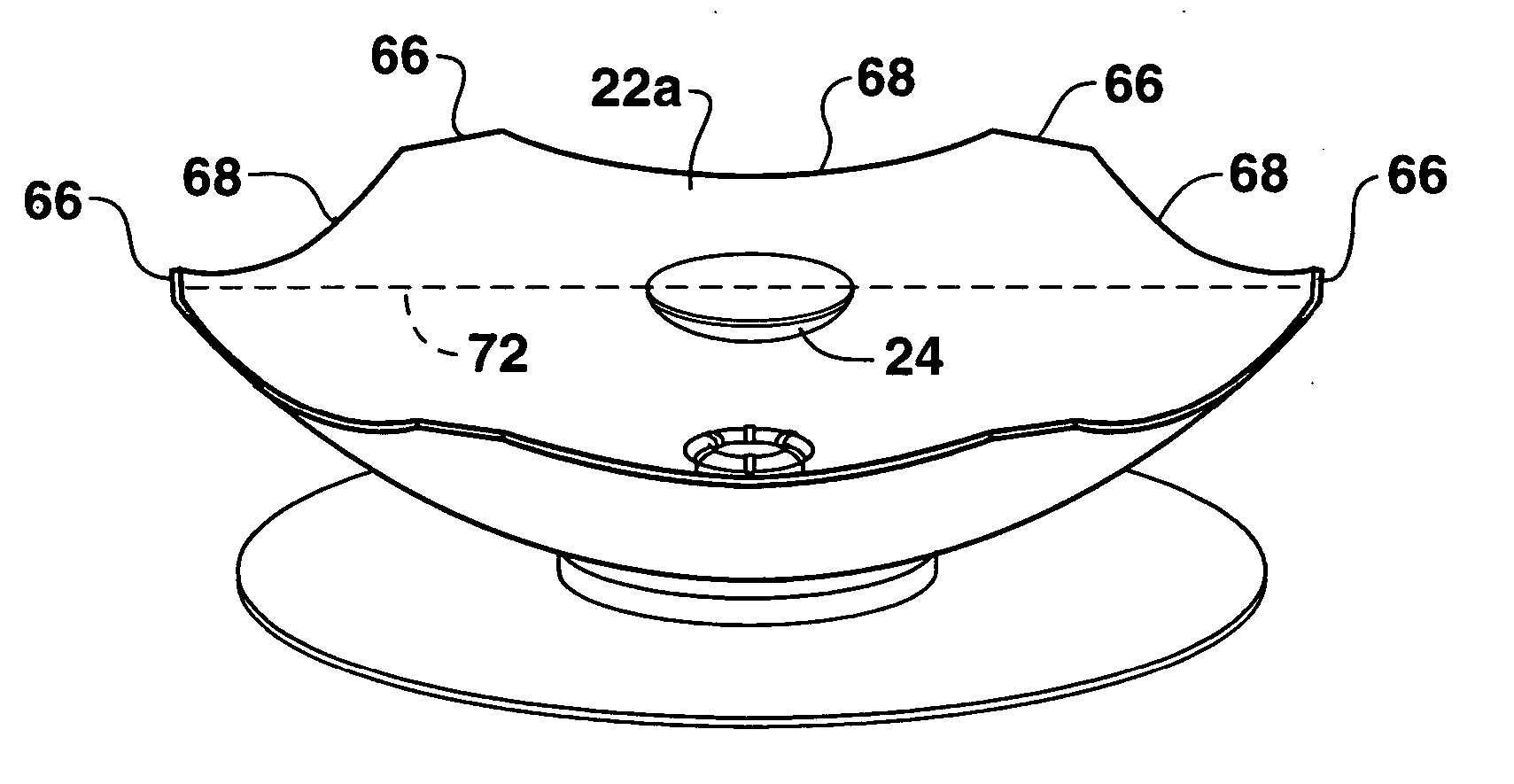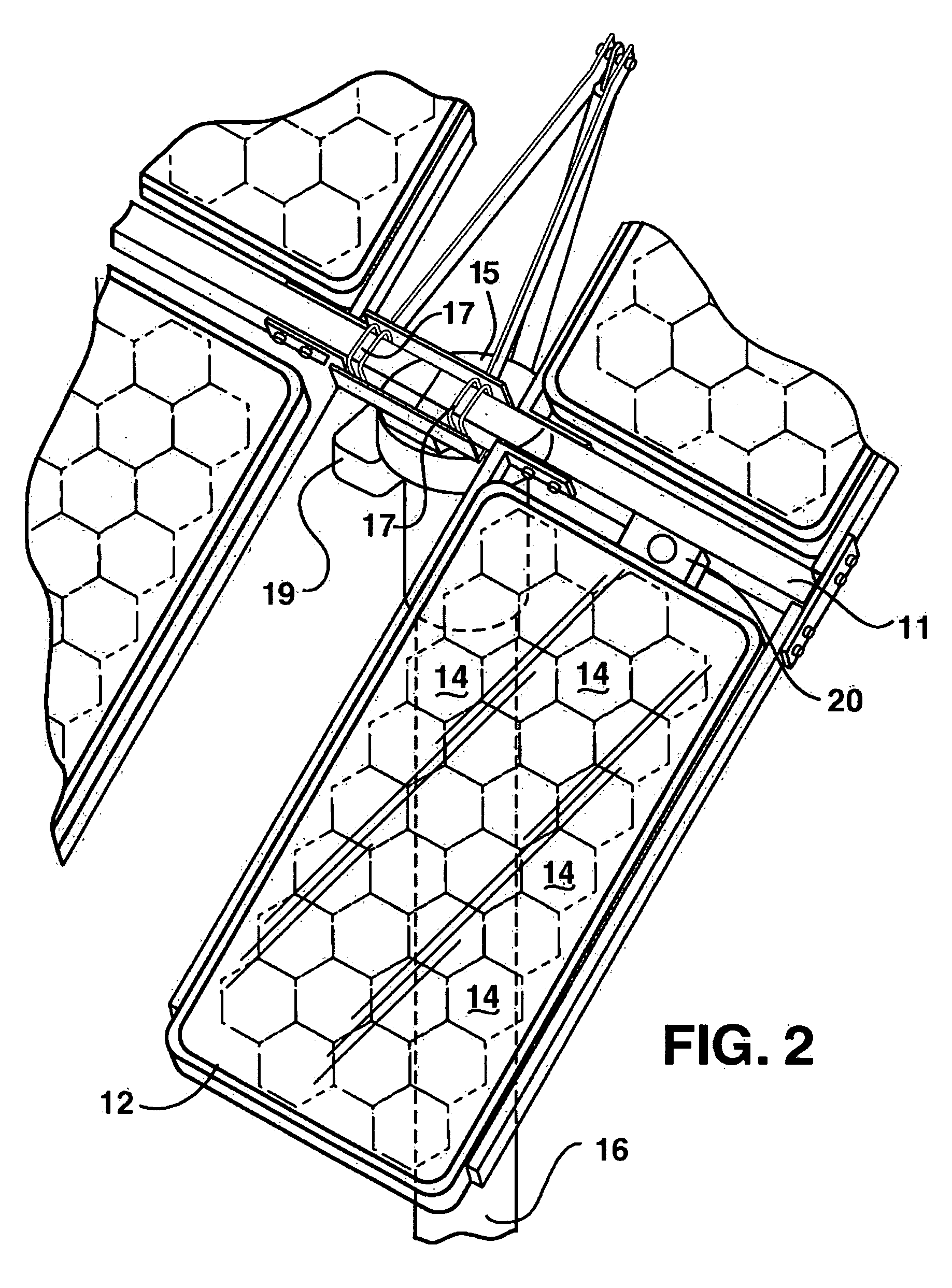Concentrator solar photovoltaic array with compact tailored imaging power units
a solar photovoltaic array and compact technology, applied in the direction of instruments, light radiation electric generators, lighting and heating apparatus, etc., can solve the problems of not being able to capture the above preferences and others, and no single design has achieved the above, etc., to achieve convenient cooling, reduce dimensions and costs, and reduce the effect of relative ease of assembly
- Summary
- Abstract
- Description
- Claims
- Application Information
AI Technical Summary
Benefits of technology
Problems solved by technology
Method used
Image
Examples
first embodiment
[0041] The perimeter of each primary mirror 22 may be formed in a variety of different fashions, and select exemplary embodiments depicting several options will now be presented and discussed with reference to FIGS. 3A-5B, respectively. In a first embodiment, such as illustrated in the plan view of FIG. 4A and the perspective view of FIG. 4B, the perimeter of primary mirror 22b is formed in a generally circular configuration. With a generally circular configuration, the entire perimeter of the primary mirror 22b may be substantially coplanar with the perimeter of secondary mirror 24 and both circular perimeters may be in contact with and / or adhered to the inner surface of front window 26. In one particular embodiment of the disclosed technology, the perimeter of generally circular primary mirror 22b is formed with an exemplary diameter 60 of about 280 mm, the perimeter of generally circular secondary mirror 24 is formed with an exemplary diameter 62 of about 50 mm, and the depth 64 ...
second embodiment
[0042] A second embodiment depicting an exemplary shape for primary mirror 22 is provided in the plan view of FIG. 3A and perspective view of FIG. 3B, in which the perimeter of primary mirror 22a is formed in a near-hexagonal fashion. The perimeter of primary mirror 22a is defined by six full sections 66 and six truncated sections 68. Full sections 66 are substantially coplanar with one another such that they may be provided in contact with and / or adhered to the inner surface of front window 26. The distance 70 measured in a straight line from the edge of adjacent full sections 66 is about 132 mm in one exemplary embodiment of the present technology. The distance 72 measured across the diameter of the perimeter of primary mirror 22a may be about 300 mm in one exemplary embodiment. Each truncated section 68 of the perimeter of primary mirror 22a is formed to define a generally arched segment that extends away from front window 26. Each truncated section 68 exists in a respective vert...
third embodiment
[0043] A third embodiment depicting an exemplary shape for primary mirror 22 is provided in the plan view of FIG. 5A and the perspective view of FIG. 5B, in which the perimeter of primary mirror 22c is formed in a near-square configuration. The perimeter of primary mirror 22c is defined by four full sections 74 and four truncated sections 76. Full sections 74 are substantially coplanar with one another such that they may be provided in contact with and / or adhered to the inner surface of front window 26, while each truncated section 76 exists in a respective plane that is substantially perpendicular to front window 26 when the primary mirror is adjacent thereto. The distance 80 measured across the perimeter of primary mirror 22c may be about 250 mm in one exemplary embodiment.
[0044] It should be appreciated in some embodiments of the disclosed technology that the respective perimeters (or portions thereof) of the primary and secondary mirrors may not be precisely arranged in a coplan...
PUM
 Login to View More
Login to View More Abstract
Description
Claims
Application Information
 Login to View More
Login to View More - R&D
- Intellectual Property
- Life Sciences
- Materials
- Tech Scout
- Unparalleled Data Quality
- Higher Quality Content
- 60% Fewer Hallucinations
Browse by: Latest US Patents, China's latest patents, Technical Efficacy Thesaurus, Application Domain, Technology Topic, Popular Technical Reports.
© 2025 PatSnap. All rights reserved.Legal|Privacy policy|Modern Slavery Act Transparency Statement|Sitemap|About US| Contact US: help@patsnap.com



